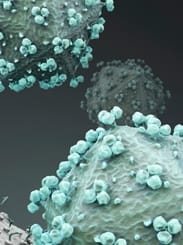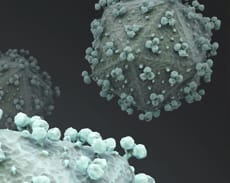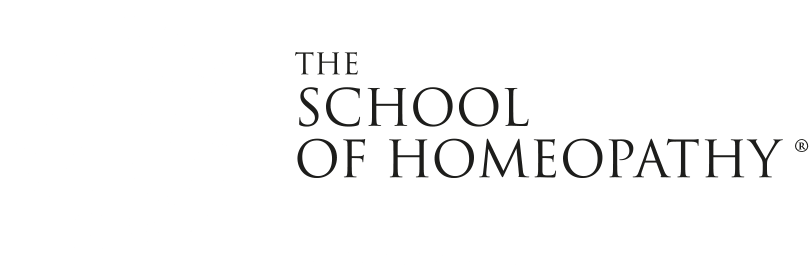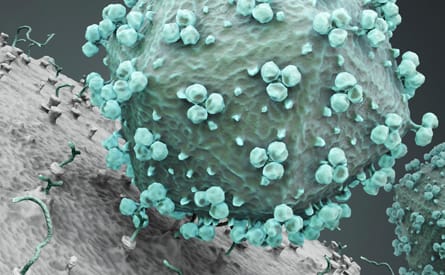

AIDS (Acquired Immune Deficiency Syndrome)
Proving date: 1988 & 1994
Proving completed by: By Misha Norland and The School of Homeopathy
Common name : AIDS
Dowload: Full proving AIDS (Acquired Immune Deficiency Syndrome)
Download: Proving rubrics
About AIDS
Break the border, merge the clan.
The World can be one, a unified family of man!
Being a nosode, the AIDS state may appear in a patient as if it were an overlay. This can come about because they have been miasmatically ‘infected’ by it. Once this overlay has been removed, the patient may present with a more individualised symptom picture. Typically patients present with weakness and vulnerability. Bad things may happen to this patient because they have acquired a ‘victim consciousness’. The major theme is erosion and break down of their protection. As this state takes hold, patients may increasingly seek isolation and withdraw into their shell, living like a hermit. They may also fear that others will become contaminated by them. Like untouchables, they feel unclean and ashamed, that they must be shunned. The opposite polarity (and their state after healing) is to feel beautiful and innocent as a child at play in a sunlit garden. Because their wall/shell/protection has collapsed, feelings of unconditional love can flow in and out without hindrance.
In a nutshell, the major theme is the breakdown of protection: 'I had lost my wall and my shell, and there was a free flow of emotions both in and out. I was exposed, almost naked, with no control.' '. . . uninterrupted flow between myself and the group vs I do not belong. I feel excluded and lied to.'
The most striking and reoccurring image to appear in the dreams of provers, was that of a house, usually of drab external appearance, yet opulent within. The image of buried treasure (another dream theme) reminds us of Hades' realm wherein worldly riches and assistants to aid the dead, have been entombed. Jeremy and Camilla Sherr have found dreams of wealth and houses to be a frequent verification in many of their AIDS patients in Tanzania.
Peter Fraser writes, 'Dreams of houses are usually interpreted
as a symbolic representation of one’s own body. Walls and roof, like skin and immune defence system, represent the barrier between inside and out.’ Many of the patients have issues that are tied into a theme of boundaries that may not be drawn tightly enough, and because of this, such individuals may become entangled in potentially dangerous relationships against their better judgment, or be subjected to abuse. Of course the individual shrinks back when persistently threatened, desiring safety in isolation. But this posture is ultimately painful, therefore a yearning for connectedness, whether spiritual or for close, symbiotic intimacy, is generated. Sometimes, arising from fear of personal harm or abandonment, anger and destructive behaviours also play out.
Today we are inundated with evidence of sexual misconduct, genocide, pollution, oceans awash with plastic, climate change, as well as pandemics, so that everyone is aware of the fragility of personal, societal and ecological boundaries. Another manifestation of this theme has come about with the arrival of the smartphone and attendant issues of invasion of privacy, as is the hacking of personal information from computer-based records. Mass and social media carry negative messages as well as conspiracy theories directly and relentlessly into our subconscious minds. How can we make these conscious and available for cure, without needing to express them pathologically? The nosode stands in the same position as other potentised disease products, and can be used to shift cases that are not responding to what appear to be well-indicated remedies. It will need to express the general theme of the case, and the causative emotional environment, rather than be based purely upon idiosyncratic and constitutional symptoms. It is likely that the AIDS nosode is the principle miasmatic genus epidemicus for Covid-19. Keeping distance, fear of disease, the injunction to stay at home so as not to pass on infection, hand washing, (similar to Syphilinum) being the hallmarks of both disease and remedy, furthermore both AIDS and Covid-19 are caused by retroviruses.
AIDS stands for Acquired Immune Deficiency Syndrome and is caused by the Human Immunodeficiency Virus (HIV). AIDS develops when the HIV infection is advanced and a person’s weakened immune system is vulnerable to infections. This is the last stage of the HIV infection, when the body can no longer defend itself and may develop various diseases, infections and, if left untreated, can result in death.
When the number of CD4 T-cells falls below 200 cells mm3 of blood, or a disease associated with HIV infection is present, an individual is diagnosed as having AIDS. The most common diseases associated with AIDS are Pneumocystis pneumonia, cachexia (wasting syndrome), oesophageal candidiasis and respiratory tract infections. Opportunistic infections can be caused by bacteria, viruses, fungi and parasites. People living with AIDS have an increased risk of developing viral induced cancers. In addition, they may also have systemic symptoms such as prolonged fevers, sweats, swollen lymph nodes, chills, weakness, weight loss and diarrhoea, and be affected by psychiatric and neurological symptoms. Without treatment, those diagnosed with AIDS will survive for about 3 years however, if a person has a critical illness, life expectancy without treatment, drops to one year or so.
Mythology
African myth: Sex with an uninfected virgin can cure AIDS. Some religious organisations have claimed that prayer can cure HIV/AIDS.
History
Centre for Disease Control and Prevention (CDC): In 1981, AIDS was first clinically observed in the United States. The first monitored cases were of injecting drug users and homosexual men who had no known cause of impaired immunity but showed signs of Pneumocystis carinii pneumonia (a rare opportunistic infection known to occur in those with compromised immune systems). It was found that a number of homosexual men had developed Kaposi's sarcoma (a rare skin cancer) and, with many more cases emerging, CDC were asked to examine the outbreak.
Official name for the disease: AIDS was initially referred to by way of diseases associated with it. The discoverers of HIV originally named the virus Lymphadeno-pathy Associated Virus (LAV) however in 1982, the term AIDS was introduced. It is also worthy of note that Chiron, the asteroid associated by astrologers with wounding and healing, was discovered at around the time AIDS became known. By the end of 1983, there were more than 2,500 cases in the US.
HIV: 2 research groups, led by Robert Gallo and Luc Montagnier, identified a retrovirus they believed could have been infecting people with AIDS, and published their findings in the Journal of Science. Gallo described a virus, isolated from a person with AIDS, as being similar in shape to other human T-lymph tropic viruses. Montagnier isolated a virus from an individual with swollen lymph nodes of the neck and physical weaknesses, symptoms that are classified as characteristics of AIDS. It transpired that both viruses were one and the same, and in 1986 they were renamed HIV.
Origins of HIV: There are 2 types of HIV, these being HIV-1 and HIV-2. HIV-2 is less transmittable and limited to West Africa. HIV-1 however, is transmitted more easily and relates to the Simian Immunodeficiency Virus (SIV) in wild chimpanzees and gorillas of South Cameroon. Studies suggest that humans hunting for bushmeat in the early 20th century acquired SIV after coming into contact with the infected blood of chimpanzees. Primates developed resistance to HIV-1. It is believed HIV-1 jumped the species barrier on 3 occasions giving rise to 3 groups of virus M, N and O. Epidemiological evidence of early HIV-1 infection has suggested it may have originated in the Democratic Republic of the Congo where the earliest documented case of HIV in humans was identified in 1959. The virus may have been present in the United States in 1966; the vast majority of infections occurring outside Africa can be traced back to one individual who was infected with HIV in Haiti and brought the infections to the United States in 1969. The epidemic then rapidly spread among high-risk groups.
High-risk transmission channels: SIV is a weak virus and is typically suppressed by the human immune system within weeks however, if there have been several transmissions of the virus from individual to individual in quick succession, there is enough time for it to mutate into HIV. Due to a relatively low person-to-person transmission rate, SIV can only spread in the presence of one or more high-risk transmission channels, which are thought to have been absent in Africa in the 20th century. High-risk transmission channels allow the virus to adapt to humans and spread, depending on the timing of animal to human crossing. Genetic studies of the virus suggest that the most recent common ancestor of HIV-1 dates back to about 1910. The HIV epidemic links in with the growth of colonialism in African cities, and social changes, including sexual promiscuity and the spread of prostitution; also unsafe medical practices in Africa after the Second World War. From the reuse of unsterile single use syringes during mass vaccinations, antibiotic and anti–malaria treatments, the virus was able to adapt and spread to humans. In Africa, AIDS is clearly a hetero-sexual disease.
Treatment: Sufferers can receive Highly Active Anti-Retroviral Therapy (HAART) to stabilise symptoms and partially recover the CD4 T-cell levels as well as reducing the virus to low or undetectable levels. It is possible to alleviate the symptoms of AIDS with disease specific drugs but medical treatments, whilst helping to reduce the HIV infection in many cases, by no means can constitute a cure.
Culture: AIDS is predominately a highly debated topic that unfortunately carries a stigma around the World. Many people infected with HIV have been discriminated against, rejected from social situations, shunned and avoided. There has been substantial violence towards those infected or perceived to be infected. The stigma prevents people from seeking HIV testing, returning for results, or securing any kind of treatment. In the late '80s and early '90s a number of famous people died of AIDS, including Freddie Mercury and Liberace, but the death that the caused the most attention was that of Rock Hudson. Many of his Hollywood friends took up AIDS as a cause and it became a very public issue. In religion, the topic of AIDS has become controversial due to some religious authorities opposing the use of condoms. In 2010, facing the Church's long opposition, Pope Benedict XVI acknowledged condoms as being an option in preventing the spread of AIDS. United Nations bodies have criticised the Church for its stance against condom use, on the basis that condoms are the best available means to prevent infections among sexually active people.
A simple kiss: The appearance of AIDS in haemophiliacs and intravenous drug users indicated that it was an infectious disease and that the infectious agent was carried in the blood. The appearance of AIDS in female partners of high-risk men, indicated that the infectious agent was probably present also in semen. The cases of babies suggested that breast milk might also be a carrier. The obvious conclusion was that all bodily fluids, including saliva, were possible carriers of the infectious agent. What had at first seemed to be restricted to a particular, and somewhat isolated, community; now came to be seen as a plague that would affect everyone.
The proving
The substance was a sample of blood taken from a man who subsequently died of AIDS-related diseases. The identity of this man and his case history is not known to 'protect' his family. Likewise the homeopathic pharmacy which ran up the potencies wishes to remain anonymous. Hiding, concealing, even lying because of self-loathing and mistrust have shown themselves to be characteristics of the genius of this remedy, as also is the opposite trait of openness and candour. The isolation, secrecy and numbness of the heroin state – the only way out of unbearable pain – have a resonance with issues important in the AIDS state, and the proving.
AIDS patients often surrender to standard medical interventions or develop monomaniacal approaches to learning all about the disease and then refuse treatment. This tendency emerged in the proving as dependency, panic and not being able to cope. Themes of suspicion and persecution reflected the sense that the health care giver must be a partner, explaining every move to the satisfaction of the patient or they will be dismissed. The AIDS patient fears exposure and feels unacceptable; they are fragile, weak, and exposed. In this state, they experience nervy tension, which was described by one prover, who wrote, 'Began to panic about being rejected in the middle of the night. Panic lasted all day. Feel in need of loads of reassurance.' Eventually a feeling of peace and calm arrives along with passive surrender to a higher power that is in contrast to the state of mind present when contracting the illness and being outcast. This is mirrored in the proving with themes of being elated and floating, and recounted by one prover as, 'I feel above it all, I feel that I am floating, I feel disconnected, I felt I had to ground myself, the World seems an exciting and strange place.' Because the illness is almost always kept secret until some great force precipitates its revelation, the patient seemingly has within himself a very low self-esteem, often masked with a sometimes thick veneer of bravado and self-importance (extravagant/wanton/invulnerable). Once 'out', a great relief is felt and another stage is set. This stage can then be a breakthrough into being empathetic, with acceptance and forgiveness, also by loved ones and family. A prover wrote, ' Feeling weepy. Things are getting to me. Normally couldn't give a damn about such things.' The worst aspect is that the AIDS patient touches on 3 fundamental taboos – sex, shit and homosexuality – and echoes of these are imprinted in the proving with themes of being easily offended and sensitive but also being playful. Themes of recklessness, invulnerability, wanting to be alone, feeling isolated and frightened portray the self-destructive nature of AIDS, exemplified by numerous sexual partners, sexually transmitted diseases, recreational drugs and prescribed drugs for venereal and linked diseases.
As stated, the AIDS nosode is associated with breakdown of boundary issues (the violence); the boundary between me and you – 'Felt very exposed – I had no shell to protect me.'. Keeping what is in, in and what is out, out. Sex is about as close as our physical and emotional experience can get to dissolving the boundary. Breakdown of the immune system is mirrored in ecology by such phenomena as the ozone hole, monoculture diseases, and in sociological terms, by abuse. Here the boundary of Self is violated. The wound of the AIDS miasm is also the foundation of its healing – the breakdown of the barrier allows growing compassion and love to come in.
Dowload: Full proving AIDS (Acquired Immune Deficiency Syndrome)
Download: Proving rubrics

Outcast - Violence - Invulnerable - Playful - Growing - Empathic - Fragile - Panic - Passive - Nervy - Elated
Proving Themes
Specialty: Infectious disease
ICD-10: B20-B24
ICD-9-CM: 042-044
OMIM: 609423
DiseasesDB: 5938
MedlinePlus: 000594
eMedicine: emerg/253
Patient UK: HIV/AIDS
MeSH: D000163
Kingdom Taxonomy
During the early days Centre for Disease Control and Prevention (CDC) did not hold an official name for the disease, they would often refer to it by the way of the diseases associated with it such as lymphadenopathy, which the discoverers of HIV had originally named the virus. In 1982 the term AIDS was introduced and CDC started to refer to the disease as AIDS.

.jpg)

